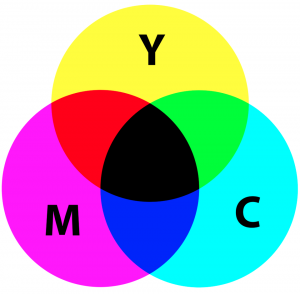RGB vs. CMYK: Everything You Need to Know
Are you wondering about which color models or color spaces to use? Then you need to learn more about RGB and CMYK and color profiles.
When you prepare an image for printing on metal, there are so many factors to consider. You need to think about the ideal resolution, the size, and shape of the print, whether to upsample the image and which print company is the best for the job (we hope you’ll consider Shiny Prints!). However, you also need to add color models to that list.
Knowing the difference between RGB and CMYK and when you should or shouldn’t use them is important, otherwise, you may end up being disappointed by your design. To help you prevent making mistakes that can be easily avoided, we’ve created a simple guide on using RGB and CMYK color models and their color spaces.
What is the difference?
If you’re preparing your images for the web, you rarely have to think about color models and profiles. Most modern computer monitors can display a wide range of colors and, therefore, colors will look similar no matter the model. On the other hand, when we’re talking about printing, the colors you see on your monitor will be slightly different than what you’ll see in print.
Both color models are used to combine various colors in graphic design. In essence, the RGB model is used mainly for digital work, and CMYK is used for physical prints. But nowadays, all printers print CMYK by converting color values at the printer level, so there are still many outdated misconceptions floating around the Internet. Fortunately, we’re here to clear the air!
What is RGB?

(Source: pixabay.com)
RBG stands for Red, Green, and Blue. The three colors are referred to as additive colors because they are combined to create as many colors as you can imagine. In other words, by mixing a certain amount of each color you get a new color. For example, to create yellow, you combine red with green. Naturally, this is an oversimplification because printers and monitors know how to precisely mix the colors to create the color you need.
When you think of RGB, think of displays. Computer monitors and all LED displays rely on RGB (and even the old-school CRT screens). RGB is the standard model because it provides the widest range of colors. This means that most of the photo-editing tools you use, like Photoshop, are set to an RGB color space by default. That’s why you need to pay attention when you prepare your photos and images for print.
What is CMYK?

CMYK stands for Cyan, Magenta, Yellow, and Key (black). The CMYK color model doesn’t work like RGB because its colors are subtractive. The easiest way to understand the difference between the two models is by combining all colors.
In RGB, when you add the three main colors together you get white. When you mix all the colors in CMYK, all you get is a darker color, depending on the mixture. For example, when you combine yellow with magenta, or more accurately, subtract yellow from magenta, the result is the color red. As you can see, CMYK is in essence the opposite of RGB and it relies on four main colors instead of three.
Understanding Color Models and Color Spaces
So far, we’ve been discussing color models. In essence, there are two main color models, namely RGB and CMYK. Color models have a number of color spaces, also referred to as color profiles. A color space is a certain implementation of a color model. For example, the most popular color spaces for the RGB color model are sRGB and Adobe RGB. Each color space has a certain number of colors available and therefore some of them contain more colors than others.
Most professionals rely on programs like Photoshop, which by default are set to an RGB color space. For many years, professional printers have warned designers and photographers to always convert their files from RGB to CMYK before sending them to print. The idea was to make sure the colors you see on your monitor will be the same in print. Fortunately, converting from RGB to CMYK is a thing of the past and is no longer necessary.
Printing technology and workflows have made significant progress over the last decade. Modern printers analyze the color profiles and automatically convert the RGB values to match CMYK. This means you no longer have to prepare your images in RGB for digital use and then convert them manually to CMYK. In fact, we prefer RGB files because the advantages outweigh any disadvantages:
- RGB files are smaller and easier to send back and forth.
- Most professionals prepare their photos for digital and print. Sticking to RBG will give you more flexibility and speed up your workflow.
- RGB supports more colors than CMYK.
Shiny Prints Recommends sRGB and Adobe RGB 1998
sRGB and Adobe RGB 1998 are the most frequently used color spaces in photography.
sRGB is usually the default color space because it closely matches most displays. As a result, it is now the standard for digital applications. When you post an image online, it’s often converted to the sRGB color space automatically. Due to its popularity, it’s usually a safe bet for printing as well because printers will match the sRGB profile settings to the CMYK ink values and produce a fairly accurate result.
However, sRGB encompasses only 35% of all visible colors. While it produces more colors than any CMYK color space, it has one of the narrowest gamuts in the RGB color model, but still broad enough for printing.
Adobe RGB 1998 was developed by Adobe to encompass the majority of colors that can be reproduced by CMYK printers. This color space relies on primary colors like sRGB but it supports more colors, up to 50% of the visible spectrum. Most importantly, Adobe RGB 1998 is richer when it comes to cyans and greens, thus being able to produce a more vibrant image.
That being said, there are major differences between printers. Some of them aren’t capable of using the extra colors in the Adobe RGB 1998 color space. Here at Shiny Prints, we use F-Series Epson printers that have the widest gamut and are capable of printing the Adobe RGB 1998 range of colors. Together with the custom-made color profiles that we use, we can achieve the most color-accurate prints on the metal printing market.
The Bottom Line
CMYK is limiting because it’s the smallest color profile and these days it doesn’t provide many advantages.
However, before choosing between sRGB and Adobe RGB 1998, you should ask yourself a few questions. Will your image take advantage of Adobe RGB’s richer cyan-green tones? Will you notice any differences in the final print? Will the additional colors appear in the print? If the answer to these questions is “no”, then it’s safe to stick to the default sRGB color space.
On the other hand, if you prefer a fast workflow and you don’t want to think about color space for every single image, our advice is to use Adobe RGB 1998 for 16-bit images and sRGB for 8-bit images. You might not need all those colors for all of your images, but you eliminate the risk of missing out on them when it comes to certain images that require them.





